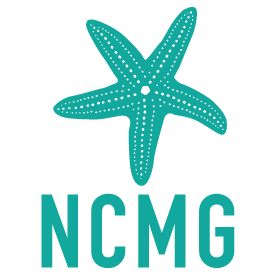Sanctuary Zones are Important
Sanctuaries are the only areas within marine parks where all the plants and animals are protected from all types of fishing, collecting and exploitation. They are vital to ensure a continuing baseline of biodiversity and abundance of species.
Sanctuary zones allow marine life to flourish undisturbed. Marine creatures grow larger and more numerous. They protect biodiversity. They make up less than 20% of the area of the Batemans Marine Park but they are what ensures effective conservation. Ultimately, sanctuary zones operate as a buffer against unforeseen environmental shocks and in so doing safeguard our marine life for future generations.
From a scientific perspective, sanctuary zones that are undisturbed provide benchmarks against which other areas can be compared and monitored. They enhance public appreciation and public education. Over time, they also enhance fishing as bigger fish move out of sanctuaries and their spawn spreads out to populate other areas of the marine park and elsewhere.
The NSW government has wound back six sanctuary zones in the Batemans Marine Park, using a disreputable trick to get around the requirements of the law. There should have been a two month public consultation before making any changes. However, Adam Marshall, the NSW Minister for Agriculture, announced on 12 December 2019 that the law would simply not be enforced to protect specified areas within the sanctuary zones and encouraged fishing in those areas. This is what he called an “amnesty”.
In addition to failing to follow the government’s own principles, the Minister’s decision was taken without scientific advice and without meaningful consultation. The government failed to consult stakeholders such as scientists conservationists, Traditional Owners, ecotourists businesses and the oyster and abalone industries. The government did not consult the Marine Estate Management Authority, which it had set up to manage marine parks. It did not even inform the Marine Park before the announcement was made..
According to media reports by the ABC and The Guardian, the local member for Bega, Andrew Constance, who played a major role in the December 2019 announcement, is alleged to have influenced the makeup of the Batemans Marine Park Advisory Group. He was also reported as criticising NSW bureaucrats responsible for the marine parks and for enforcing the sanctuary zones.
WHAT YOU CAN DO To
TAKE ACTION!
If you haven't already done so, please
sign our on-line petition
Write to members of the NSW Government
via the Save Batemans Sanctuaries website.
ACTIONS YOU CAN TAKE NOW.
Marine Sanctuary FAQ
Why are sanctuary zones important?
Sanctuary zones are the only areas of marine parks where all the plants and animals are protected from all types of fishing and collecting.
This means the whole food web is preserved and allowed to maintain a healthy balance of predators and prey. Big fish are the top predators and only big fish such as large snapper (a favourite fishing target), blue groper and large lobsters are able to prey on long-spined sea urchins to prevent their populations increasing and eating out the kelp forests.
How do sanctuary zones increase fish populations?
Sanctuary zones are the only areas where fish are likely to grow bigger than the regulation fishing size limit.
Bigger fish spawn more eggs and so produce more offspring. The sanctuary zones in lakes and estuaries protect important habitats such as mangroves and seagrass beds that provide spawning and nursery areas to allow the juvenile fish to survive and grow. They then spill over into the unprotected areas where they can be fished.
What do scientists say about sanctuary zones?
Scientists have shown that fish increase in both number, diversity and size in sanctuary zones compared with fished areas.
They recommend that:
at least 30% of a Marine Park should be protected in sanctuaries. Batemans Marine Park has less than 20% protected sanctuary zones
the larger the area of sanctuary zones and the longer the time marine environments are protected, the more effective are sanctuary zones, and
sanctuary zones should protect the full range of different habitats, such as rocky reefs, beaches, lakes and estuaries.
Read the scientific evidence.
CHeck out our library of papers online
Changes to Sanctuary Zones in Batemans Marine Park
What is the government trying to do now to BMP sanctuary zones?
In December 2019, an amnesty was introduced to immediately allow fishing in six sanctuary zones in BMP. This amnesty was declared via a Media Release. The decision was taken without scientific advice, without public consultation and without following the government’s own principles for decision-making with regard to the marine environment.
What consultations should have taken place?
The NSW law says there must be a two-month period of public consultation before regulations covering zoning and use of areas in marine parks can be amended.
Who should the government have consulted with?
To ensure Marine Parks operate effectively, the Government should have consulted with a range of experts and interested groups such as, scientists, public servants, marine park officers, Traditional Owners, ecotourism businesses and the oyster and abalone industries. The community, as prominent users of the BMP, are also an important part of the consultation process.
When will the Government consult?
We expect this consultation period to commence very soon. As soon as consultation begins, the NCMG will be looking for lots of help to lobby the Government to remove the amnesty and maintain all our existing sanctuary zones. See details below.
What happens after the two-month consultation period?
Although the amnesty permitting recreational fishing has already been put in place, it is hoped the government will review all submissions in good faith. It will then take a final decision as to whether to proceed with the roll-backs as set out in the amnesty or whether it will modify them in some way. This review may take some time after the close of submissions, during which those who are concerned can continue to lobby the responsible ministers and other politicians. They can also continue to keep the issue alive in the public arena.









